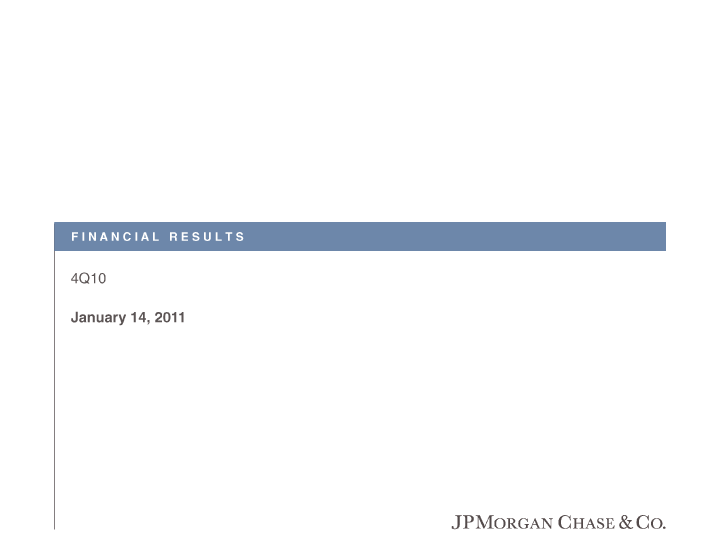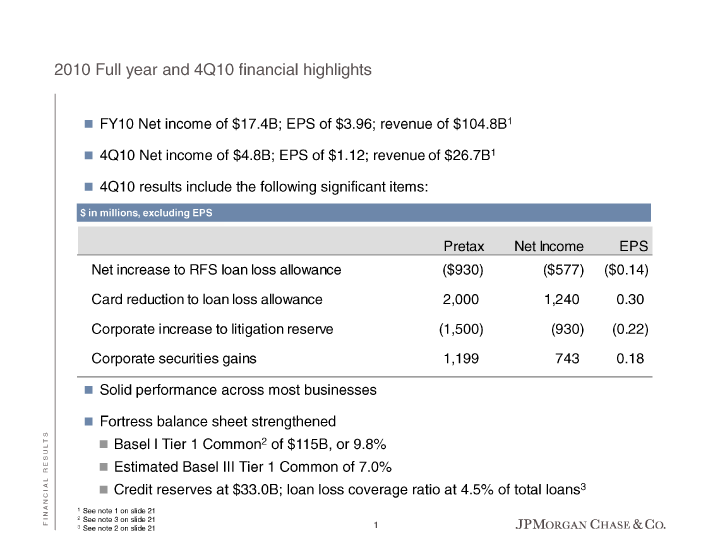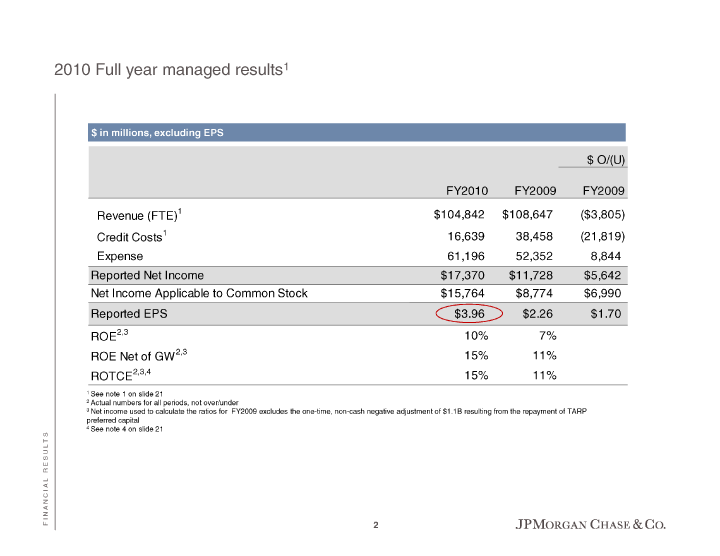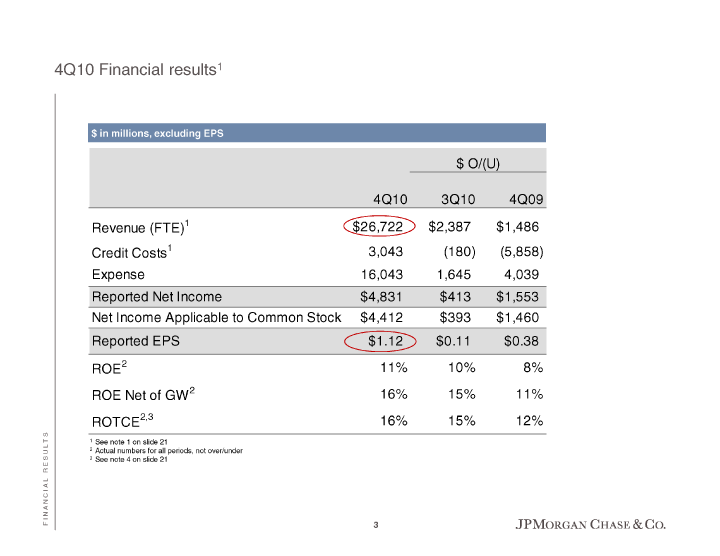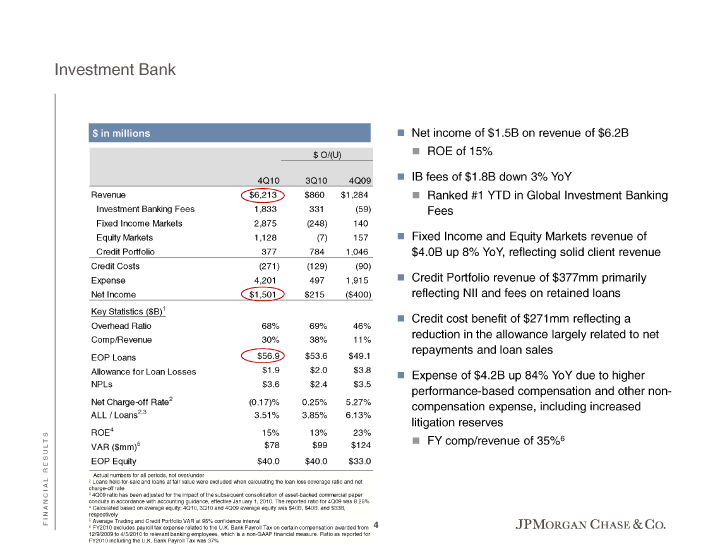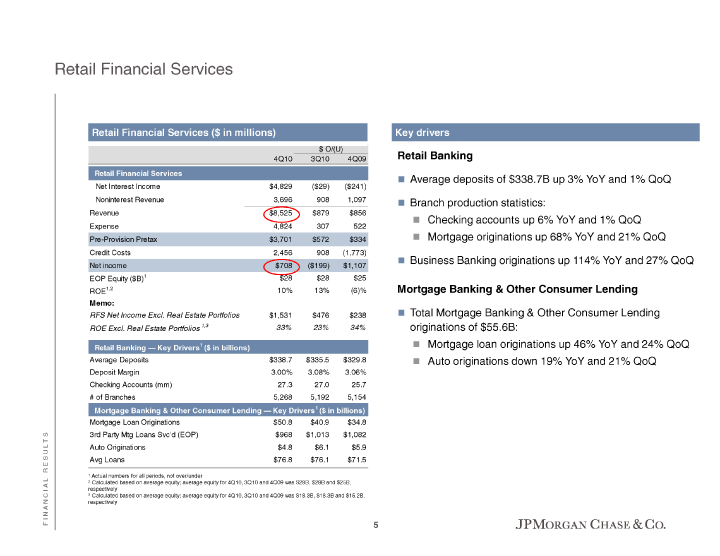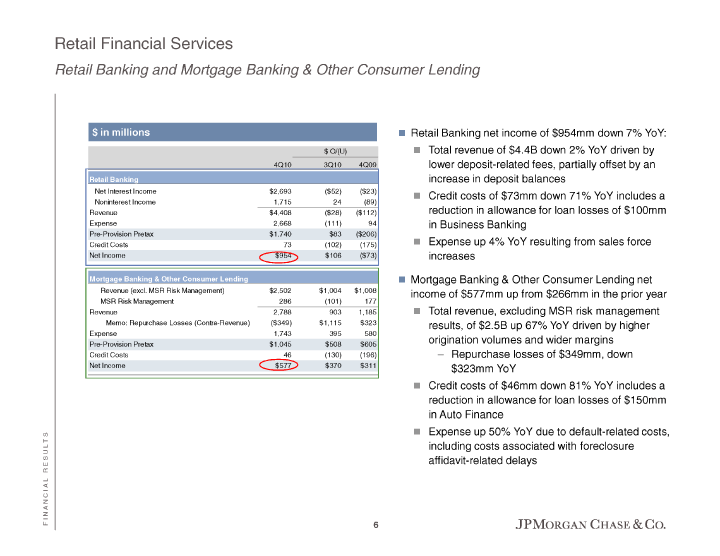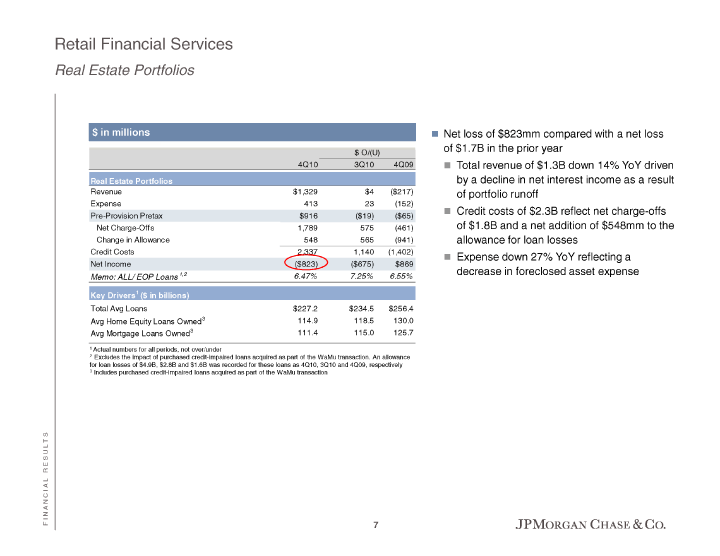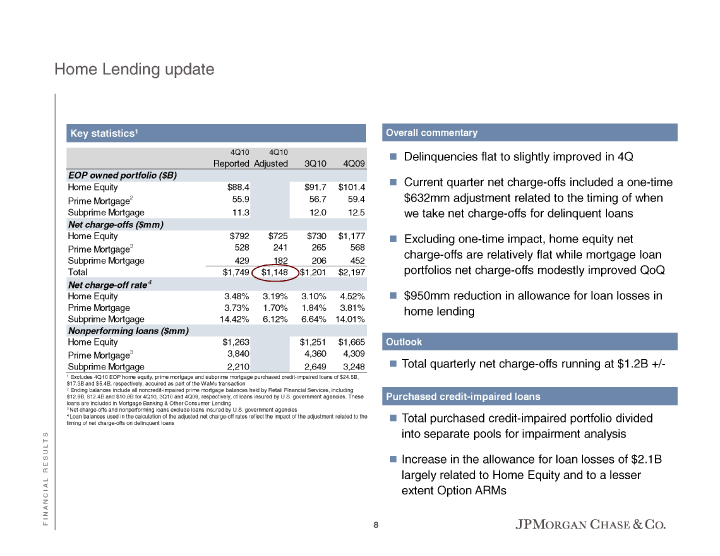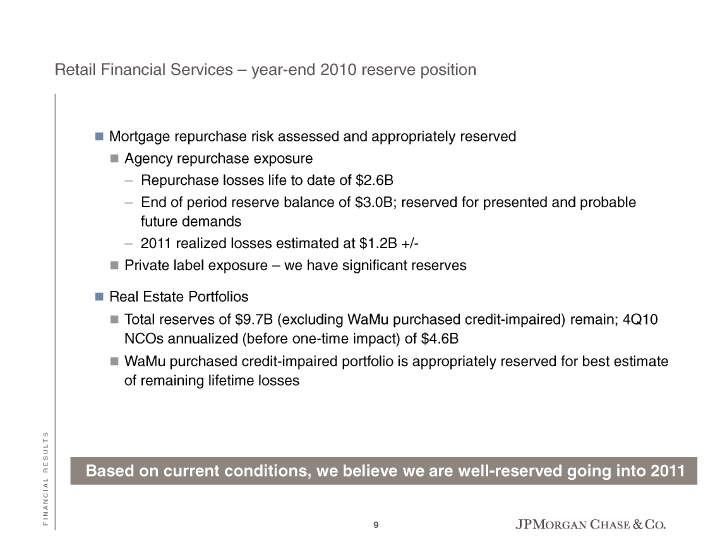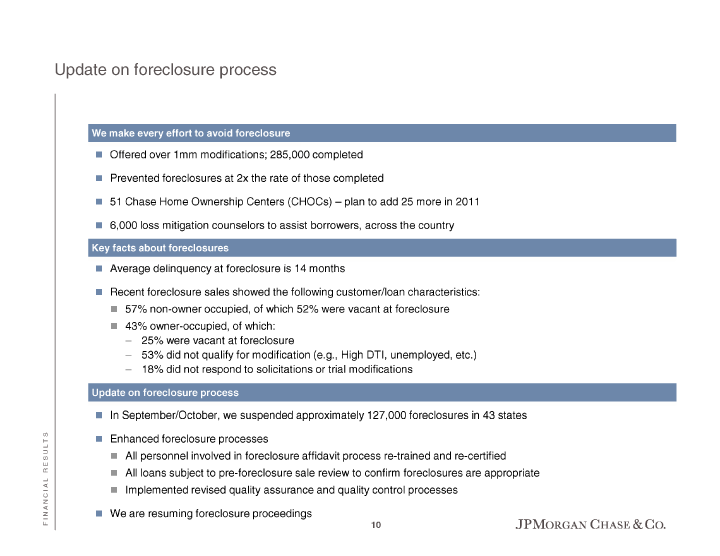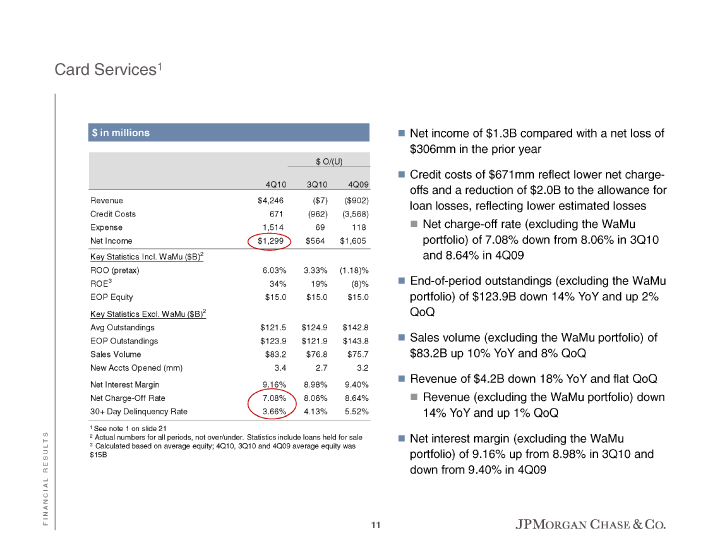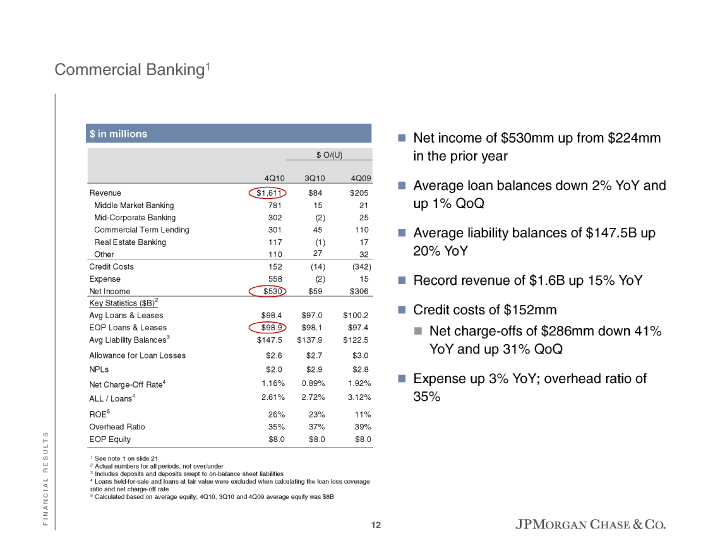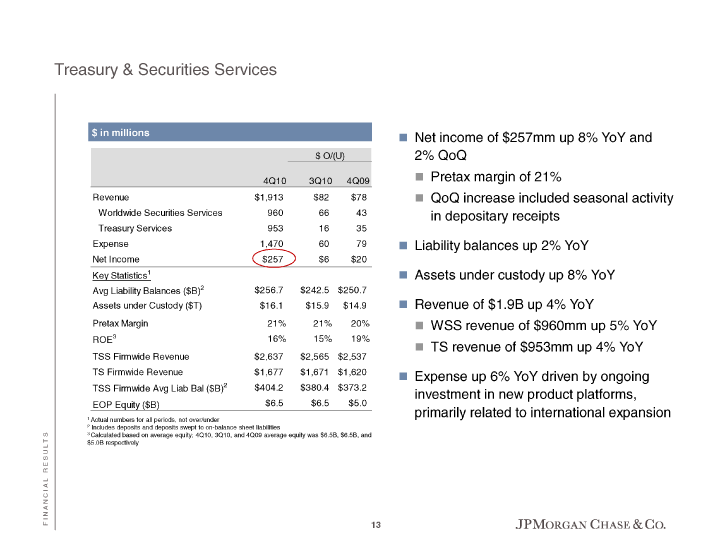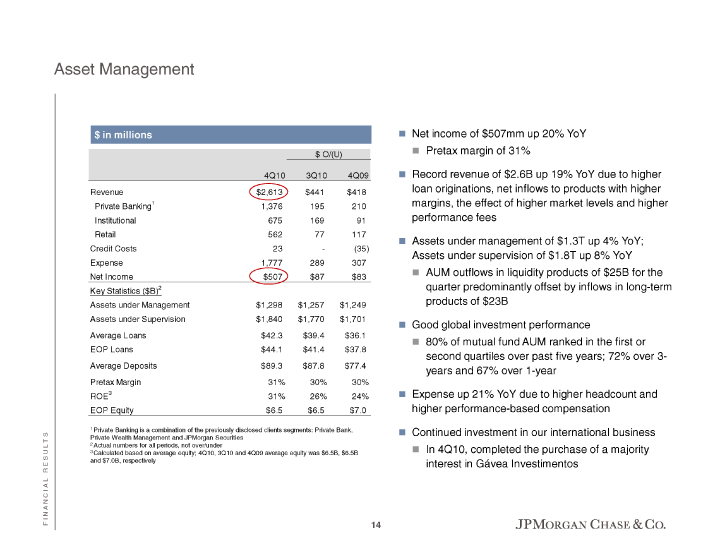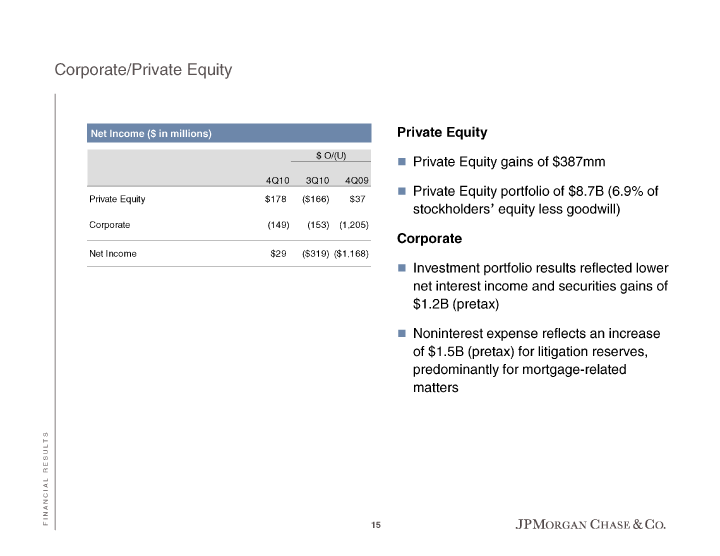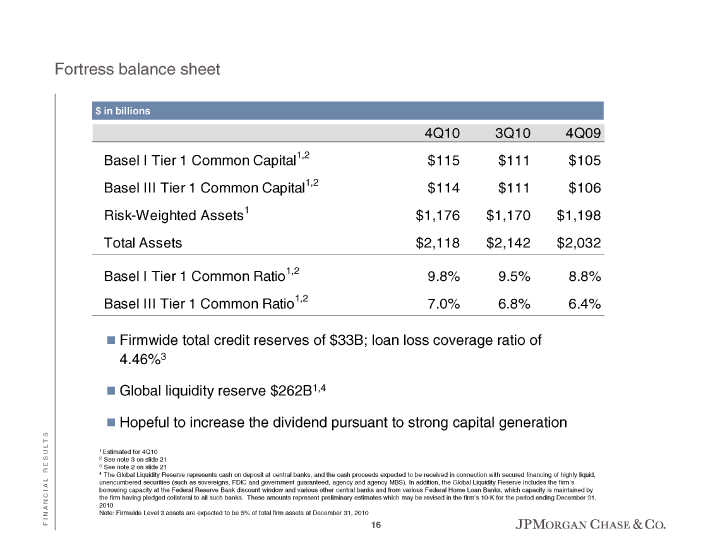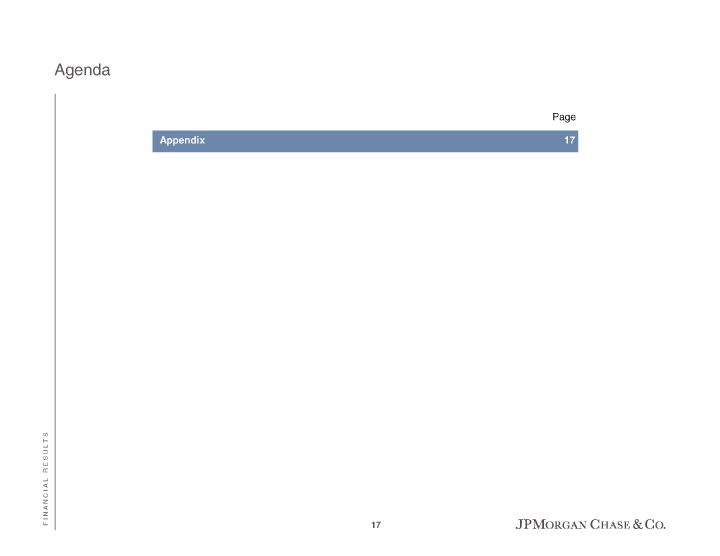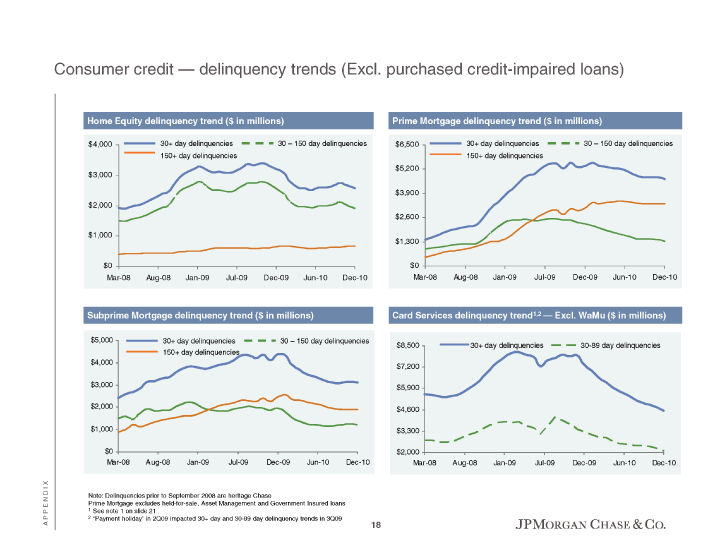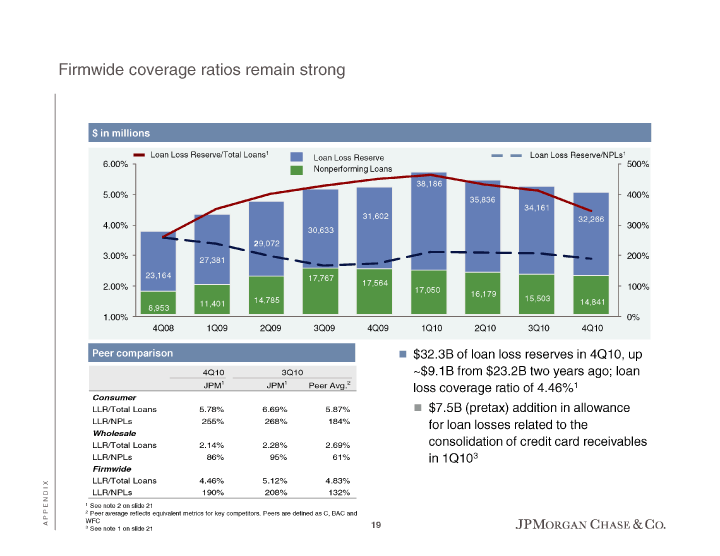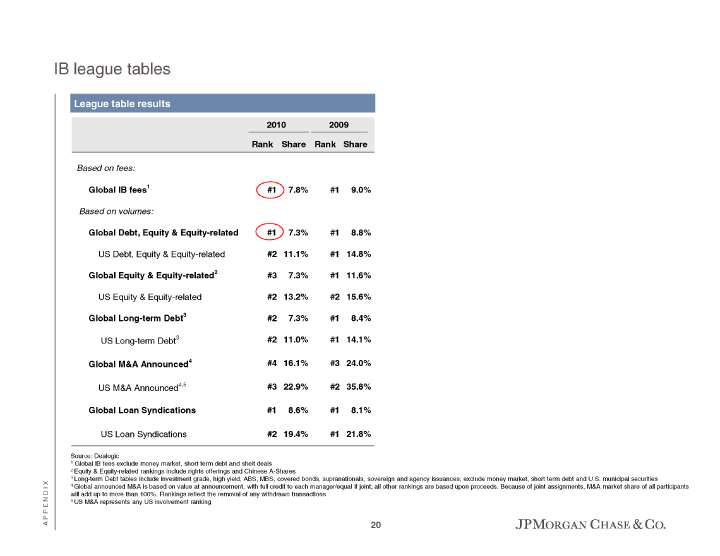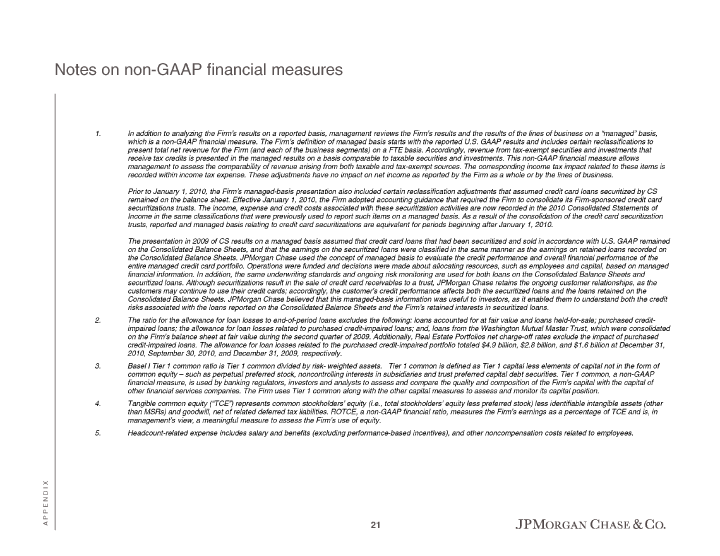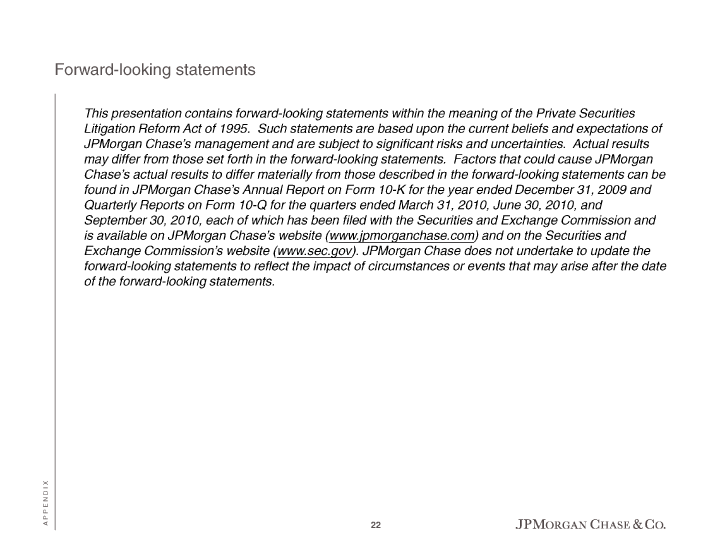| 1. In addition to analyzing the Firm’s results on a reported basis, management reviews the Firm’s results and the results of the lines of business on a “managed” basis, which is a non-GAAP financial measure. The Firm’s definition of managed basis starts with the reported U.S. GAAP results and includes certain reclassifications to present total net revenue for the Firm (and each of the business segments) on a FTE basis. Accordingly, revenue from tax-exempt securities and investments that receive tax credits is presented in the managed results on a basis comparable to taxable securities and investments. This non-GAAP financial measure allows management to assess the comparability of revenue arising from both taxable and tax-exempt sources. The corresponding income tax impact related to these items is recorded within income tax expense. These adjustments have no impact on net income as reported by the Firm as a whole or by the lines of business. Prior to January 1, 2010, the Firm’s managed-basis presentation also included certain reclassification adjustments that assumed credit card loans securitized by CS remained on the balance sheet. Effective January 1, 2010, the Firm adopted accounting guidance that required the Firm to consolidate its Firm-sponsored credit card securitizations trusts. The income, expense and credit costs associated with these securitization activities are now recorded in the 2010 Consolidated Statements of Income in the same classifications that were previously used to report such items on a managed basis. As a result of the consolidation of the credit card securitization trusts, reported and managed basis relating to credit card securitizations are equivalent for periods beginning after January 1, 2010. The presentation in 2009 of CS results on a managed basis assumed that credit card loans that had been securitized and sold in accordance with U.S. GAAP remained on the Consolidated Balance Sheets, and that the earnings on the securitized loans were classified in the same manner as the earnings on retained loans recorded on the Consolidated Balance Sheets. JPMorgan Chase used the concept of managed basis to evaluate the credit performance and overall financial performance of the entire managed credit card portfolio. Operations were funded and decisions were made about allocating resources, such as employees and capital, based on managed financial information. In addition, the same underwriting standards and ongoing risk monitoring are used for both loans on the Consolidated Balance Sheets andNotes on non-GAAP financial measures, g g g g securitized loans. Although securitizations result in the sale of credit card receivables to a trust, JPMorgan Chase retains the ongoing customer relationships, as the customers may continue to use their credit cards; accordingly, the customer’s credit performance affects both the securitized loans and the loans retained on the Consolidated Balance Sheets. JPMorgan Chase believed that this managed-basis information was useful to investors, as it enabled them to understand both the credit risks associated with the loans reported on the Consolidated Balance Sheets and the Firm’s retained interests in securitized loans. 2. The ratio for the allowance for loan losses to end-of-period loans excludes the following: loans accounted for at fair value and loans held-for-sale; purchased creditimpaired loans; the allowance for loan losses related to purchased credit-impaired loans; and, loans from the Washington Mutual Master Trust, which were consolidated on the Firm’s balance sheet at fair value during the second quarter of 2009. Additionally, Real Estate Portfolios net charge-off rates exclude the impact of purchased credit-impaired loans. The allowance for loan losses related to the purchased credit-impaired portfolio totaled $4.9 billion, $2.8 billion, and $1.6 billion at December 31, 2010, September 30, 2010, a nd December 31, 2009, respectively. 3. Basel I Tier 1 common ratio is Tier 1 common divided by risk- weighted assets. Tier 1 common is defined as Tier 1 capital less elements of capital not in the form of common equity — such as perpetual preferred stock, noncontrolling interests in subsidiaries and trust preferred capital debt securities. Tier 1 common, a non-GAAP financial measure, is used by banking regulators, investors and analysts to assess and compare the quality and composition of the Firm’s capital with the capital of other financial services companies. The Firm uses Tier 1 common along with the other capital measures to assess and monitor its capital position. 4. Tangible common equity (“TCE”) represents common stockholders’ equity (i.e., total stockholders’ equity less preferred stock) less identifiable intangible assets (other than MSRs) and goodwill, net of related deferred tax liabilities. ROTCE, a non-GAAP financial ratio, measures the Firm’s earnings as a percentage of TCE and is, in management’s view, a meaningful measure to assess the Firm’s use of equity. 5. Headcount-related expense includes salary and benefits (excluding performance-based incentives), and other noncompensation costs related to employees.21 A P P E N D I X |
